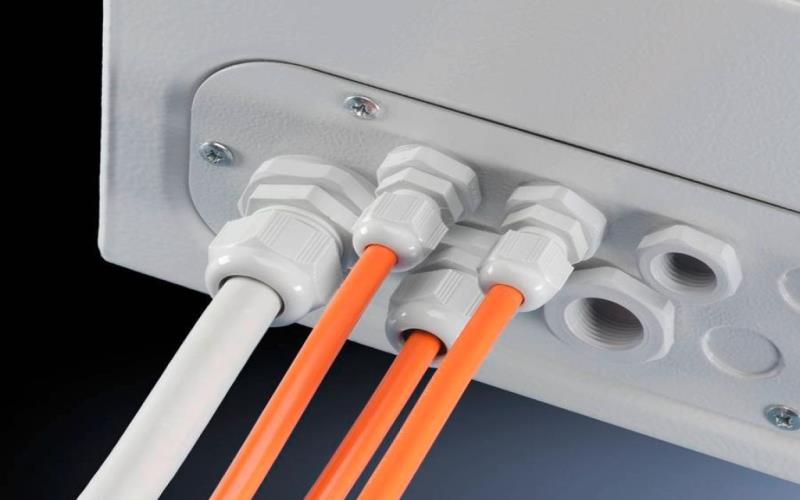Cables are very essential in our daily lives since they supply power to gadgets and also interconnect various devices. However, cables can get damaged easily, especially if they come in contact with water or any other liquid substance. Water can become a problem in cables as it leads to issues such as rusting, short-circuiting, or complete failure of the cable.
Fortunately, there is a solution! You can keep your cables dry with waterproof cable glands. Smart gadgets provide necessary protection to the cables, protecting them from water with the waterproof cable gland, and ensuring their proper functioning. When used correctly, waterproof cable glands protect cables from water, reduce the risk of system failure, and increase the life of cables. Here are some key strategies for how you can use moisture-blocking protectors to ensure your cables do not corrode:
1. Understand Your Cable Gland
Before proceeding to the detailed discussion of installation, let us turn to the system of a waterproof cable gland definition. A cable gland consists of three primary components: The gland body, the sealing ring, and the compression nut are the most important parts of the compressor.
The gland body is the primary component that clamps onto or around the cable as its housing, and the sealing ring creates a water-tight barrier around the external jacket of the cable. In this arrangement, the compression nut has a job to tightly fit the sealing ring when it is tightened so that the final output does not leak.
It will also be wise to go through the particular cable gland you are using because different manufacturers have slight differences in the design or method of use of their cable glands.
2. Prepare Your Cable Entry
One should follow the following steps to increase the chances of a successful cable gland installation process. First, determine the area of the surface when passing the cable into the enclosure or junction box. Make sure the mounting surface is clear of any debris/contaminant and is free from disturbing bumps, humps and other features which would make it difficult for the gland to be mounted.
Next, it is necessary to measure the outer diameter of the cable with the required level of accuracy. This information is important since the correct size of the cable gland will be needed depending on the size of the cable. The appliance of the wrong size gland seriously jeopardizes the integrity of the seal and exposes your cables to the risks posed by moisture.
3. Choosing the right cable gland
Now that you have the cable diameter it is time to find the right cable gland for the application. The cable gland manufacturers are usually very versatile in the kind of sizes that they make available to fit the different cable diameters, as well as in the kind of materials used given the environmental requirements.
In situations where the cable is to be used in an outdoor environment or an environment with high humidity, it is advisable to use cable glands of materials that are immune to corrosion such as stainless steel or non-metallic material. These robust glands will be very resilient and able to offer users longevity with the protection of the cables.
4. Install with Precision:
Installation is the moment of truth especially when a profound problem has been diagnosed. Every cable gland would usually come with different instructions on how it is to be installed and should be followed strictly as it may vary.
This involves pulling the cable through the body of the gland, placing the sealing ring over the outer covering of the cable and then inserting the entire unit into the penetration point of the cable. Once in place ensure that you make a very tight compression nut to ensure that the torque of the compressor is of industrial standard as recommended by the manufacturer.
Don’t over-tighten the lids as this will exert pressure on sealing parts which in turn may affect the sealing characteristics and result in leakage.
5. Inspect and maintain:
However, installation work is not the end of the program as there is much more to it. To keep your cable protected from water and make sure water cannot penetrate it, the waterproof cable glands should be inspected for any defects and serviced regularly.
A rough visual examination should be made of the gland assemblies and their various components at occasional intervals to determine any sign of wear, let alone, damage and looseness. Some of these include temperature changes, vibrations, and exposure to chemicals that will affect the sealing materials used.
If there is a problem with it, then the damaged parts must be changed as soon as possible or it can be changed completely for the cable gland assembly since then the risk of water entering the gland is possible and consequently damage the cable.
Conclusion:
Ensuring that the cables do not get wet with the help of the waterproof cable glands is one of the best ways to protect the cable systems’ integrity and performance. Here are some of the major considerations that if followed help you to prevent your cables from the ravages of moisture and also help to get good cable performance for years.
You should also note that prevention is an important factor that should be taken kindly in life because it can go a long way. It is advised to use high-standard waterproof cable glands and as a precaution embrace the best protocol in installation as well as maintenance.
Source: Explore
